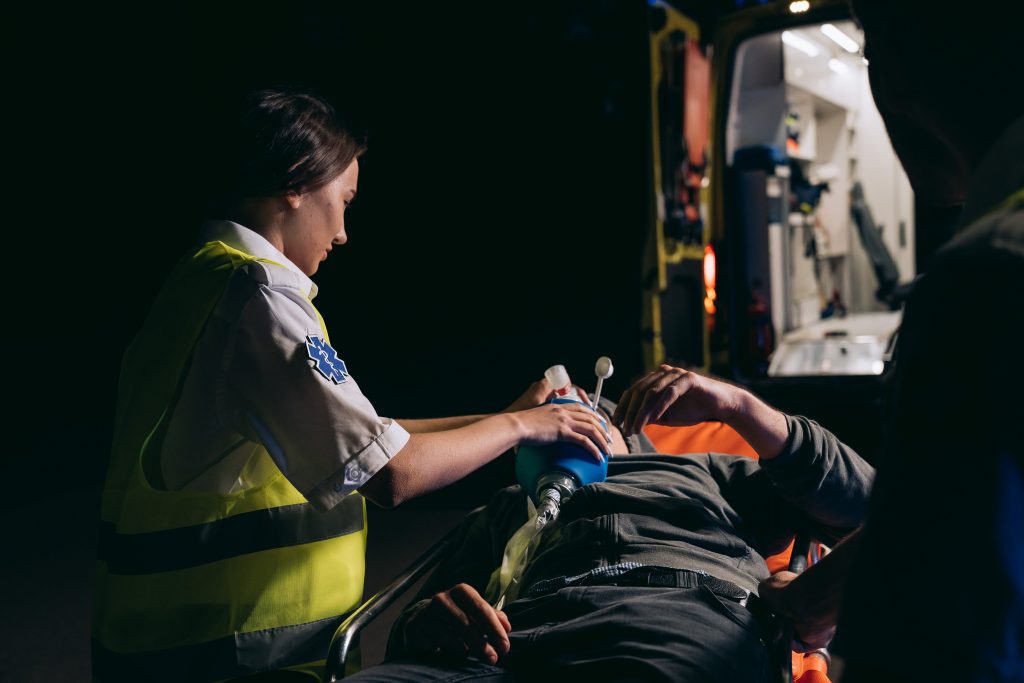 》The following is an experience shared from Justin, the founder of Archangel Tactical Medicine. Justin is a paramedic having served at both inner-city metro and suburban fire departments. His operating environment has exposed him to severe trauma calls on a routine basis from which he draws his experience to train and teach others.
》The following is an experience shared from Justin, the founder of Archangel Tactical Medicine. Justin is a paramedic having served at both inner-city metro and suburban fire departments. His operating environment has exposed him to severe trauma calls on a routine basis from which he draws his experience to train and teach others.
I had been a medic for a year. I was 23 years old and I was working with a brand-new medic who just passed his test weeks prior. I was the lead. We got sent to a patient with a “self-inflicted” gun shot wound (GSW) to the head. Aside from law enforcement (LE), we were the only help coming. I completed my mental checklist while enroute. What would I do to correct the problem? What would we see when we arrived on scene? Is the scene secure? Are there more patients we’d have to stabilize that dispatch doesn’t know about? Anxiety set in as my mind raced.
As we arrived on scene, from our cab the victim appeared to be deceased, but as I approached on foot he could be observed breathing. We only had one patient. No other casualties. Quickly, we packaged the patient on a backboard and moved him into the ambulance. The patient was unconscious, unprotected airway, breathing but not stable.
Up until this point, I was the rookie who got excited and anxious. Some guys questioned how I would respond to a situation just like this. I took a deep breath and FOCUSED on my training. This was the most serious injury I had faced up until this point in my career. This victim needed me to perform to the highest standard.
When we initially arrived, LE appeared to have just secured the scene but had not yet provided aid to the victim. In basic Stop the Bleed classes that are available to both Civilians, LE, and military members, the primary FOCUS is to control major hemorrhage and make sure the patient is able to breath on their own.
It’s easy to gain tunnel vision, especially in an incident where lives are on the line. Without advanced medical training, it is easy to see how the focus could be on the initially observable injury – GSW to the head in this case. As a first responder or bystander civilian, what should you do prior to Emergency Medical Service’s (EMS) arrival?
Apply direct pressure to stop the bleeding. Reposition the victim into a recovery position to make sure the airway does not become compromised further. Check for other wounds. What if it had been a domestic that was staged? What if the patient needed a tourniquet placed on their leg because they had another injury that was not noticed because the focus was the head?
You’re taught in a Basic Life Saver (BLS) class to fix the ABC’s. They’re breathing, so they have a pulse. Focus on the airway and bleeding. What if they weren’t breathing? Start CPR. There’s so much more you can do, even without equipment, as a bystander to begin to stabilize the patient.
This carries over into your everyday life as well. What do you do when you are faced with a crisis and you are forced to perform on demand? You FOCUS. You try not to get tunnel vision, observe what’s going around and what you can do to mitigate the situation.
Stay FOCUSED. If it’s a medical emergency, provide BLS care if necessary and instruct someone else to call 911, or call 911 first then begin first-aid. Sustain life long enough for EMS to arrive. This involves remaining focused long enough to remember to summon aid while also keeping the victim breathing.
Not faced with a medical crisis? This applies across all forms of Life Altering Events (LAE). If you’re in a gas station when an armed robbery occurs, stay focused on the protection of life followed by the collection of information that could aid in the investigation such as collecting the license plate number. Life comes first. Intervening with lethal force should only be considered if the suspects place yours or others’ lives in imminent danger.
No matter the crisis, stay focused on preserving life, both your own and others. Focus on your training. Don’t get tunnel vision.
– Justin
This article was originally written by the Grayman Briefing. Stay in the know, sign up for Intel and Situational Awareness alerts pushed to your phone on emerging threats and preparedness warnings. Click HERE to subscribe to the Grayman Briefing.
=====
Become a Survival Dispatch Insider …
We bring together survival enthusiasts and preppers to share skills and knowledge, so you can enhance your preparedness for emergencies and ensure the safety of you and your community.
The Results You’ll Get …
Our community, courses, and memberships are pretty special. We’re focused on the ways it will make a huge difference in your life.
Here are a few of the things you’ll be able to do as a member of Survival Dispatch Insider …
1) Improve your emergency preparedness by learning survival skills and strategies from experienced preppers.
2) Build lasting connections with like-minded individuals that share your passion for safety and readiness.
3) Access a wealth of knowledge and resources to assist in protecting you and your community during unexpected situations.
Click HERE to get started.
=====
